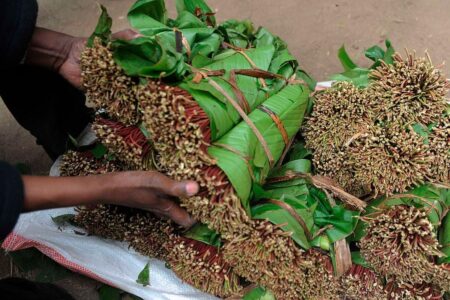Mira traders in Kenya managed to double their exports last year after the Somali market reopened, but they faced stiff competition from their rivals in Ethiopia.
Data from the Food and Agriculture Authority shows that Kenya exported 6.2 million kilograms of miraa in 2023, all of which was destined for Somalia.
This represents double the 3.1 million kilograms exported to the Horn of Africa country in 2022, after exports resumed that year.
However, exports declined for five consecutive months in the second half of 2023, due to intense competition from Ethiopian farmers for stimulants.
“In 2023, a total of 6,267,781 kg of miraa was exported to Somalia. This represents a 50 percent increase compared to 3,132,802 kg exported in 2022,” the authority said.
“Export quantities declined significantly in 2023 from August to December due to intense competition from Ethiopia,” she added.
The intense competition for Kenyan miraa comes on the heels of a decision last year by Somalia to grant Ethiopia ten days of exclusive access to the miraa market each month.
Local miraa farmers have protested Somalia’s move, claiming that Ethiopia should compete openly and fairly with Kenyan produce. Ethiopia had applied to Somalia for protection in the trade of the product, arguing that Kenya had monopolized the miraa trade in Somalia.
President Hassan Sheikh Mohamud lifted a two-year ban on miraa exports to Somalia in July 2022, a major relief for Kenyan miraa farmers.
This came following talks with his then Kenyan counterpart Uhuru Kenyatta, and just weeks before controversial general elections held in August of that year.
Exports to Somalia were initially set at 19 tonnes per day when the ban was lifted, before being increased to 50 tonnes per day.
Kenya produces about 32,000 tonnes of miraa annually, worth 13.1 billion shillings. About 80% of the crop is sold to local consumers while 20% is exported.
Somalia is the main destination for Kenya’s miraa exports, buying 99 percent of the exported crop.
Mira is mainly grown in eastern Mount Kenya, with 65% of farmers coming from Meru, according to AFA. The total area under cultivation is 55,281 acres, with Meru and Embu accounting for 88.4% of the total area.
Other major farmers include Kirinyaga, Tharaka Nithi and Marsabit.
“Its cultivation and trade have contributed significantly to the country’s economy and development, through foreign exchange earnings,” the Afghan Farmers Association says.
